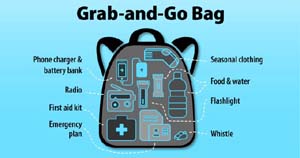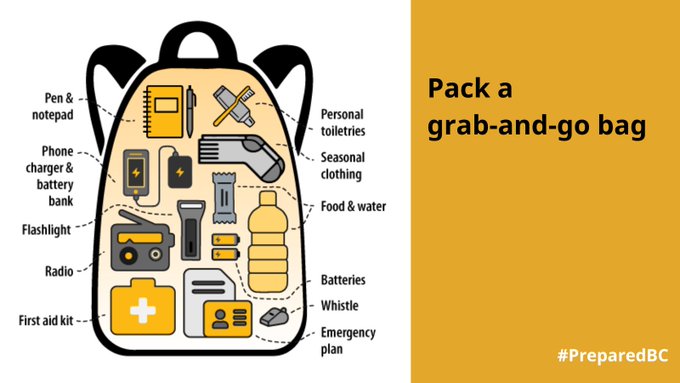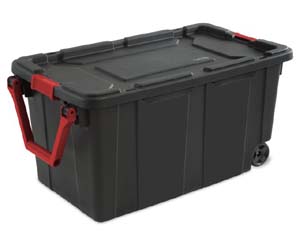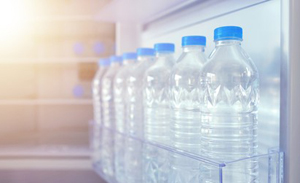Tuesday May 3, 2022 | LANGFORD, BC
by Mary P Brooke | Island Social Trends
This is Emergency Preparedness Week (May 1 to 7) in British Columbia and across Canada.
Grab-and-Go Bag vs Emergency Kit:
For years, people on Vancouver Island have been encouraged to develop grab-and-go bags. “The grab-and-go bag is for when you have to flee or evacuate. The emergency kit is for hunkering down,” explains Jeri Grant, Juan de Fuca Emergency Program Coordinator.
Grab-and-go bags should be near the door or exit that you would use in the event of an emergency. An emergency kit would include more items and might need a larger storage space like a shed.
Here is the BC Emergency Preparedness info for building a grab-and-go bag and an emergency kit.
Contents of a grab-and-go bag:
- Food (ready to eat) and water
- Phone charger and battery bank
- Small battery-powered or hand-crank radio
- Battery-powered or hand-crank flashlight
- Extra batteries
- Small first-aid kit and personal medications
- Personal toiletries and items, such as an extra pair of glasses or contact lenses
- Copy of your emergency plan
- Copies of important documents, such as insurance papers and identification
- Cash in small bills
- Local map with your family meeting place identified
- Seasonal clothing and an emergency blanket
- Pen and notepad
- Whistle
Contents of an Emergency Kit:
Building an Emergency Kit is outlined on the BC Emergency Preparedness page. Put supplies in one or two containers, such as plastic bins or duffel bags. Store them in an area of your home that’s easy to get to, such as a hall closet, spare room or garage.
- Non-perishable food: minimum three-day to one-week supply, with a manual can opener
- Water: four litres per person, per day for drinking and sanitation
- Phone charger, power bank or inverter
- Battery-powered or hand-crank radio
- Battery-powered or hand-crank flashlight
- Extra batteries
- First-aid kit and medications
- Personal toiletries and items, such as an extra pair of glasses or contact lenses
- Copy of your emergency plan
- Copies of important documents, such as insurance papers and identification
- Cash in small bills
- Garbage bags and moist towelettes for personal sanitation
- Seasonal clothing, sturdy footwear and emergency blanket
- Dust masks
- Whistle
- Help/OK Sign (PDF): Display the appropriate side outward in your window during a disaster.
Have plenty of water for an emergency kit:
Most people need four litres of water per person per day, but some people may need more. For example, children, people who are nursing or people who are sick. Hot temperatures can double water needs.
Pets need about 30 mL of water per kg of body weight per day. For example, a cat or small dog needs at least half a cup of water each day.
Purchase bottled water for an emergency kit. Keep it in its original container in cool and dark place that’s easy to reach. Don’t open the bottles until you need to use them.
===== ABOUT ISLAND SOCIAL TRENDS:
Island Social Trends (formerly West Shore Voice News, Sooke Voice News and MapleLine Magazine) has been covering emergency preparedness in the west shore region since 2008 and SD62 in depth since 2014.
Mary P Brooke, B.Sc., Cert PR is the editor of Island Social Trends (and the previous publications).
Free subscription to the ENews Digest (includes articles from this islandsocialtrends.ca news protal).
===== LINKS:








